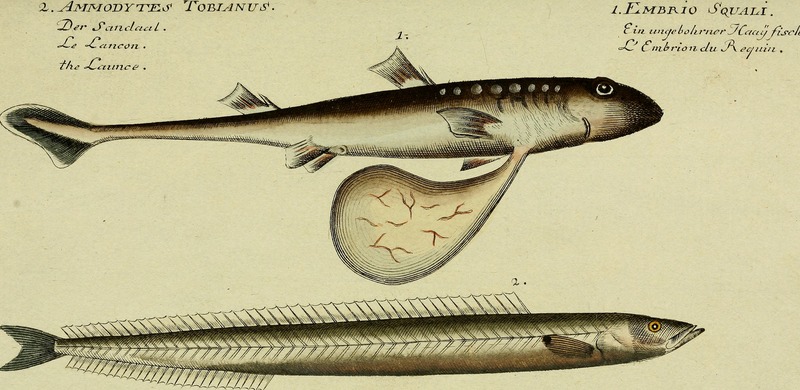|
| Query: fishes | Result: 1101st of 13223 | |
lesser sand eel (Ammodytes tobianus)
| Subject: | lesser sand eel (Ammodytes tobianus)
| | Poster: | Wiki Photos (---@---.---)
| |

| Resolution: 3232x1576
File Size: 1336682 Bytes
Upload Date: 2017:04:24 17:49:16
|
2. Ammodytes Tobianus. The Launcer. = lesser sand eel (Ammodytes tobianus)
1. Embrio Squali.
Title: D. Marcus Elieser Bloch's, ausübenden Arztes zu Berlin ... Ökonomische Naturgeschichte der Fische Deutschlands : mit sieben und dreyssig Kupfertafeln nach Originalen
Year: 1783 (1780s)
Authors: Marcus Elieser Bloch, 1723-1799; Krüger, junior, ill; Ludwig Carl Schmidt, engraver; Johann Gottlieb Schmidt, engraver; Schmidt, F. G. , engraver; Bodenehr, G. , engraver; Darchow, C. , engraver; Berger, F. G. , engraver; Schmidt, Friedrich Wilhelm, engraver; Schmidt, A. F. , engraver; Gursch, C. F. , engraver; Baird, Spencer Fullerton, 1823-1887, former owner. DSI
Subjects: Ichthyology; Fishes; Fishes
Source: https://commons.wikimedia.org/wiki/File:D._Marcus_Elieser_Bloch%27s,_aus%C3%BCbenden_Arztes_zu_Berlin_%C3%96konomische_Naturgeschichte_der_Fische_Deutschlands_-_mit_sieben_und_dreyssig_Kupfertafeln_nach_Originalen_(1783)_(20794954188).jpg
The lesser sand eel or sand lance (Ammodytes tobianus) is a species of fish in the sand lance family Ammodytidae. It is an elongated cylindrical fish which may be up to 20 centimetres long. |
^o^
Animal Pictures Archive for smart phones
^o^
|
|